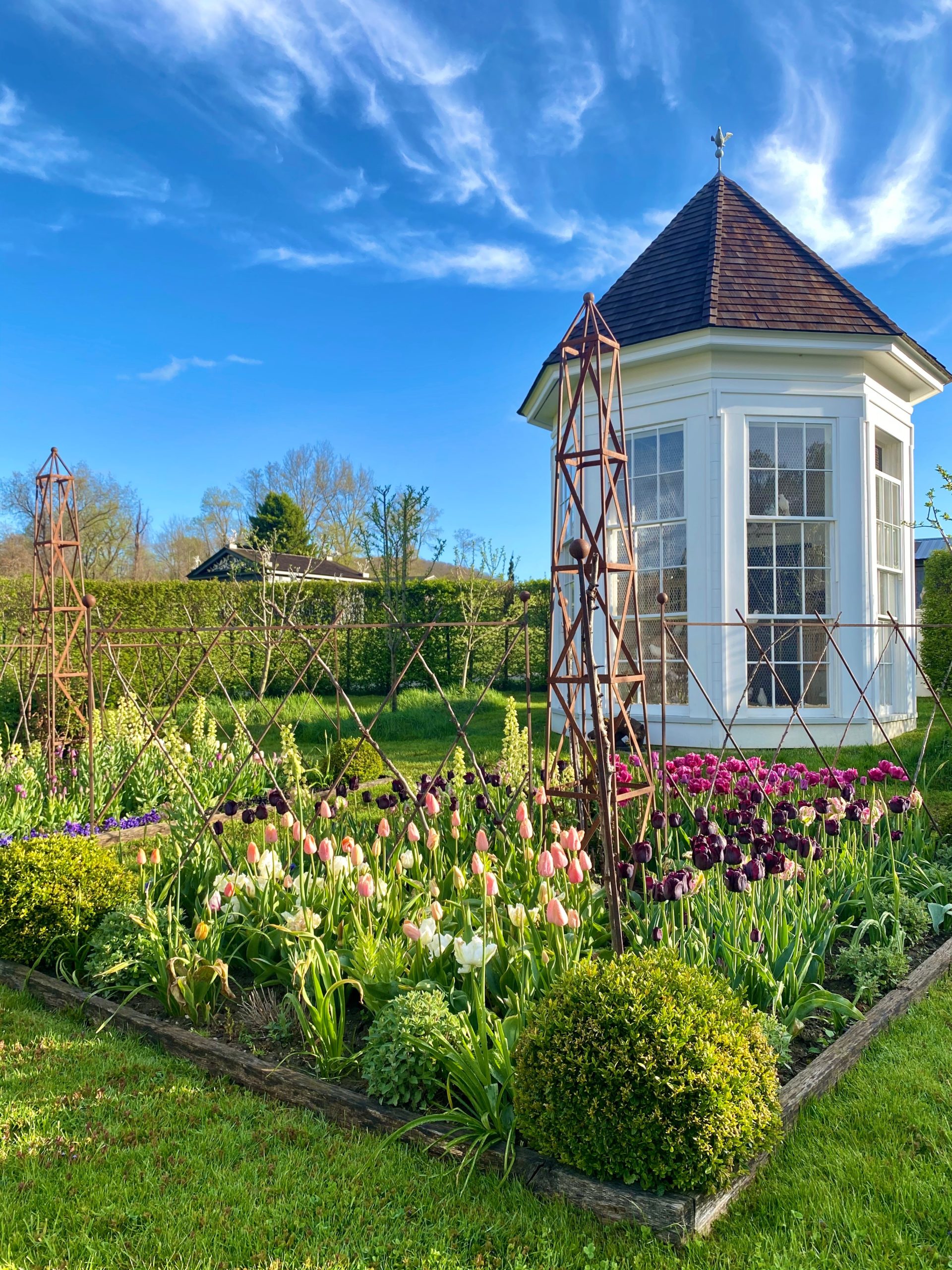Anthony Bellomo was 12 years old when his love for gardening took full bloom. With generations of green thumbs before him—both of his grandfathers and his father were avid gardeners—it’s no wonder the hobby was something of a second nature to Bellomo by the time he was in his teens. His dedication and admiration for floriculture prompted him to earn a degree in landscape architecture, kicking off a 20-year-long career in New York City.
On weekends, Bellomo and his partner Christopher Spitzmiller would escape the hustle and bustle of Manhattan for their bucolic Clove Brook Farm in Millbrook, New York, where they tended to a garden of their own (as well as an abundance of award-winning livestock). When the pandemic began, the couple found themselves fleeing urban life entirely, moving full-time to their upstate sanctuary. With this transition, a unique opportunity to open a garden shop presented itself to Bellomo. “It allowed me to make this transition from working for a big company in the city to doing something on my own at a very different scale,” says Bellomo. Located in the heart of Millbrook, his shop, Orangerie, attracts visitors from near and far for its lush plants and mix of traditional and contemporary garden decor.

Anthony Bellomo in front of his shop, Orangerie, in Millbrook, New York.
QUENTIN BACONWith warmer weather on the horizon, we called up Bellomo to chat about preparing for the spring season. “Just seeing that little glimmer of life emerge is always really exciting,” he says. “There’s nothing like spring green—I think it’s just the most wonderful part of the garden cycle.”
From flowering bulbs to planting perennials, read on to get his expert tips for your most bountiful, colorful garden yet.

Glass forcers are filled with water, and a bulb gets placed on top with no additional watering needed.
Courtesy of Anthony BellomoA high-yield garden doesn’t have to be high maintenance.
“There are ways to have a beautiful garden without it being a very high maintenance endeavor. With bulbs, once you get them in the ground, you don’t really have to do anything with them. And when forcing bulbs indoors, once they start growing they don’t require a lot of watering. Some bulbs can be placed in glass forcers which are like small vases made especially to hold a bulb.”
A spring garden can fit anywhere.
“I like to think about each season as having the potential to have a different planting scheme. That could be in the garden, it could be planters by a door, on a porch, or even in a small series of little pots on an apartment balcony or windowsills. So anybody can kind of do this at any scale!”
-
 Courtesy of Anthony Bellomo
Courtesy of Anthony Bellomo -
 Courtesy of Anthony Bellomo
Courtesy of Anthony Bellomo
Start planning your bulb garden in the fall.
“Plant bulbs that bloom in the early spring, like daffodils and tulips, in the fall, because they have to go through a dormant period in the winter. When the weather breaks, they wake up and start growing. It doesn’t matter if the ground freezes, because essentially the bulbs are just sleeping away. They’re insulated by the soil and a blanket of snow actually helps with that.”
Different bulbs need different depths.
“I think a general rule of thumb is that the depth of planting should usually be two to three times the diameter of the bulb. So for example, little teeny tiny bulbs, like snowdrops or grape hyacinths, would only be planted into the ground a couple of inches, while bigger bulbs like daffodils and tulips will go into the ground deeper, five or six inches or more depending on their size.”
Plantings can go in early, too.
“The trick with spring plantings is that people think that you really have to wait until the last frost before planting things that flower for the summer. But the truth is, there are a lot of plants out there that are cold hardy, meaning they can take a nighttime frost. So you can have bright color as early as late March through April and into May, while there are still nighttime low temperatures and frost coverings.”

In early spring, tulips and daffodils fill the garden beds.
Think ahead to future flowerings.
“Certain bulbs, like daffodils, naturalize, meaning that the drift of initial bulbs will get thicker and more robust with more blooms every year. Tulips are the opposite, every year after the initial planting, they start to fade out. So by year two, you get less color, less blooms and then by year three, they’ve sort of fizzled. One of the things that we do here to ensure that our tulip display is always robust and beautiful is we only allow the tulip bulbs to be used once. We plant them in the fall, they bloom in the spring for a big block of color, and then all of that gets pulled out after they bloom and dispensed out in the compost heap. Come fall again, we do another big plant there of tulips. But there are plenty of bulbs out there that will come back year after year—the trick is knowing what the longevity will be.”
Watch out for wet soil, sun and animals.
“There are three things that can impact the health of a bulb. First, they don’t want to sit in wet soil. If you have a garden bed that is very wet and soggy, the bulbs will tend a rot—too much water is problematic. Second, it’s important to know whether or not they want full sun. Third, animals can sometimes pose a problem. If you’re in the country, like we are, squirrels and other animals might dig around and steal some of your bulbs.”
-
 Courtesy of Anthony Bellomo
Courtesy of Anthony Bellomo -
 Courtesy of Anthony Bellomo
Courtesy of Anthony Bellomo
Try composting for even better soil.
“As long as you have really good, healthy soil, you really don’t have to do much to prepare. We are fortunate here in that we have a big compost pile that breaks down, and we use a lot of that to amend the soil, to make sure that we’re putting nutrients back into the soil after it’s depleted—it enriches the soil again.”
Consider seasonal changes in light.
“The thing to keep in mind is when early spring bulbs bloom, there really is not foliage out on the trees yet. So you don’t have to worry too much about dense shade, but there are bulbs (like snowdrops) that form carpets, especially around woodlands. Those would not be as happy in an open lawn where there’s full sun, whereas tulips would thrive in full sun.”
Keep an eye on moisture levels in potted plants.
“For anything in urns or planters, like on patios or balconies, they’re not going to get the same amount of rainfall or moisture that they would if they were in the ground, so make sure to monitor the water level.”

















